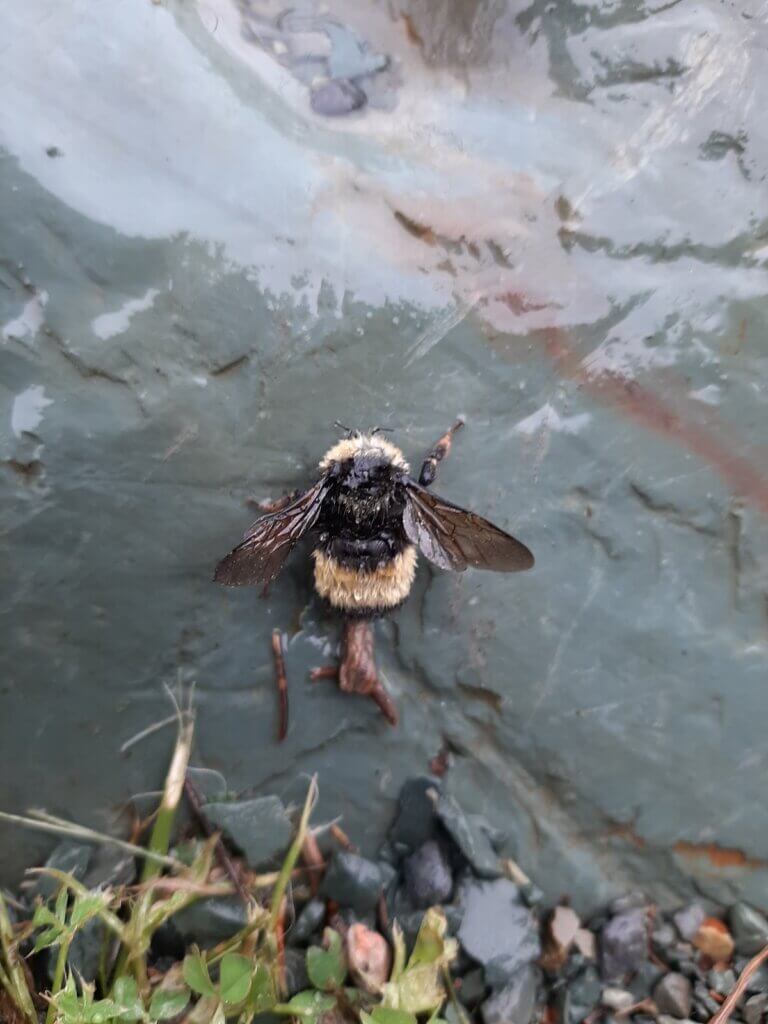World Bee Day ?
Get to know some of our bees!
Today is World Bee Day! On this day, many people around the world celebrate our honeybees and think about the incredible things they do for us – making honey and beeswax and pollinating our crops! We love honeybees at Manuels River, but today we want to highlight another type of bee: bumble bees! Our bumble bees are also important pollinators and, unlike honeybees, they’re a natural part of the ecosystems in Newfoundland and Labrador. That means that they play an important role in pollinating the native plants and producing food for the birds and wildlife that live in our province. Let’s meet some of them!
Northern amber bumble bee
These big, fuzzy bees are easy to spot and identify because they’re almost entirely yellow. Northern amber bumble bees are not considered to be endangered. They live all across Canada and are often seen in the Boreal forest, which is probably where they got the scientific name Bombus borealis. You might see one on such common plants as goldenrod or raspberry.
Fernald cuckoo bumble bee
These pale-coloured bumble bees are small and not very common, although they are found in most Canadian provinces and territories. Cuckoo bumble bees have a sneaky strategy for laying their eggs – instead of collecting their own pollen and constructing their own nests, they lay their eggs in the nest of another bee! That means the other bee does all the work, and the cuckoo bee gets all the rewards.
Yellow-banded bumble bee
Although they used to be quite common, these bees have been in decline since the 1990s and are now becoming rare. We aren’t sure why these bees are disappearing, but it may be due to climate change, habitat loss or diseases that have spread from other bees used by farms. These bees are important though! They pollinate both wild plants and crops that humans eat.

These are just three of the species found in the province, but at least six other species have been spotted on the island of Newfoundland. If you want to get involved in monitoring bee populations, or you want to improve your bee identification skills, consider joining BumbleBeeWatch! You can take pictures of all the bumble bees you see this season and upload them to bumblebeewatch.org. There you can make your best guess at identifying the species. Then, an expert will look over the pictures and let you know if you got it right. Either way, you’ll be letting bee researchers know what kind of bees are around and that helps them determine which bees live here and how common they are. That’s all really useful data when it comes to helping keep track of endangered species!

Comment section